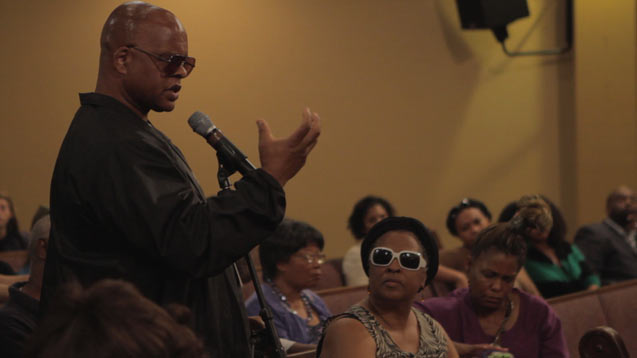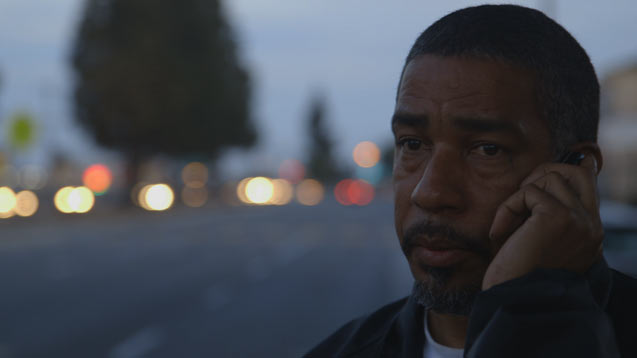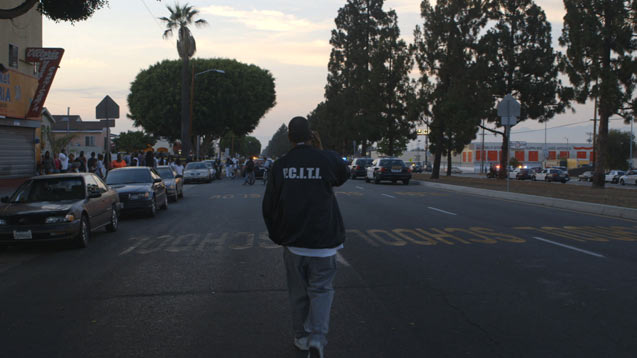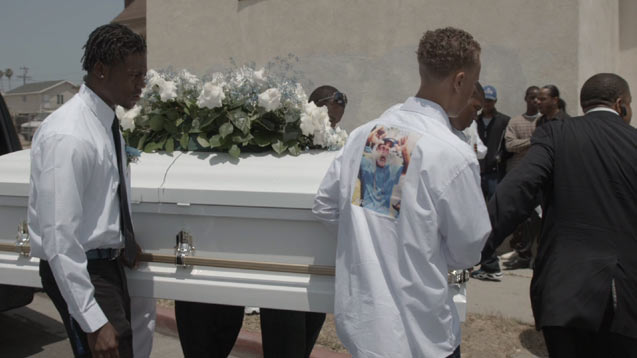“It took me years to accept that I would no longer use violence to achieve my goals,” says Aquil Basheer, a former gang member. “That didn’t change until probably my 30s.”
Basheer, who grew up in the ’50s in Compton, a city in southern Los Angeles County, had to first overcome a longtime acceptance of violence as a means of accomplishing his objectives and a willingness to inflict pain and injury upon others. Until he reached that point, he could not play the influential role he does today, as a member of the LA-based gang intervention group called License to Operate (LTO).
To understand his story and that of so many others, however, it’s important to understand the context. Today, the word “gangs” often evokes the factions that originated in the ’80s when crack cocaine was introduced.
“That’s what most people remember about gangs, but they don’t understand the pretext,” says Basheer.
To be sure, the precursors to what we understand as modern gangs are much more complex than the introduction of crack cocaine. It all starts with community.
 Aquil Basheer, Executive Director of A Better LA, head of LTO, and founder of P.C.I.T.I. (Professional Community Intervention Training Institute), surveys a scene during a neighborhood rollout. (Photo: License to Operate)
Aquil Basheer, Executive Director of A Better LA, head of LTO, and founder of P.C.I.T.I. (Professional Community Intervention Training Institute), surveys a scene during a neighborhood rollout. (Photo: License to Operate)
The Foundation of Gangs as We Know Them Today
While gang life in America has a long, rich and complex history, Basheer, who is African-American, speaks to the beginnings of black gangs in America, and how they have evolved into the gangs we know today. Many of these gangs are the very ones LTO intervenes to help. LTO members typically return to their own neighborhoods to help out their own former gang members.
Back in the ’50s and ’60s, Basheer explains, prior to the Civil Rights Act of 1964, African-Americans grouping together and endorsing violence and rebellion against social and economic conditions (what some called or thought of as “gangs”) was a defense mechanism against Jim Crow-type thinking that continued to prevail in the country. Many gangs had great respect for the Black Panther Party and identified with its rebellion against government procedure and societal strictures.
According to Basheer, who was affiliated with the Black Panthers, many of these “gangs” were “militant, hardcore, and revolutionary.” They wanted to change their own position in society. They wanted to change the status quo – and they were not afraid to use violence to do so.
However, in the late ’60s, “black communities were devastated because of the prison industrial complex, the eradication of jobs in the area, black exploitation films and the acceptability of drugs,” notes Basheer.
“It was just total destruction of the principles and value system that we’d held onto for so long,” he adds.
 Aquil Basher, Executive Director of ABLA and founder of P.C.I.T.I., speaks to a crowd during a community gathering. (Photo: License to Operate)
Aquil Basher, Executive Director of ABLA and founder of P.C.I.T.I., speaks to a crowd during a community gathering. (Photo: License to Operate)
In the ’70s, some of the country’s most destructive gangs began to emerge. A combination of economic depravity, drugs and the decimation of the Black Panthers caused young black kids who might have previously joined the social movement to become “renegades” instead, notes Basheer. They left behind the former notion of a united force with a singular enemy and began turning on each other, paving the way for what would become longstanding gang rivalries.
“There were no jobs or guidance – men were in prison or dead,” Basheer says. “There was no manhood development; [these gangs] defined their own program.”
Modern-Day Gangs
In a survey from the late 1990s, the US Department of Justice’s Office of Justice Programs found that in gangs most recently formed, the majority of gang members joined between the ages of 15 and 17. The highest percentage of gang members in these gangs were Caucasian, with African-Americans close behind. In gang reporting from 1998, 78 percent of jurisdictions reported mixed-race gangs. Use of firearms and drug trafficking by gangs was also on the decline from prior years.
Despite the perhaps surprising statistics about gangs’ racial makeup and use of violence, one of the most well-known gang rivalries that remains in the US today is between the “Bloods” and the “Crips.” Both gangs were founded in late ’60s/early ’70s LA. Both gangs are primarily comprised of African Americans.
Reynaldo Reaser, 46, is a former Raymond Crip from Athens in LA County, who has served time for a number of crimes, including assault with a deadly weapon and attempted murder. Like Basheer, he also got involved in gang life around the age of 15.
 Reynaldo Reaser, LTO member, takes a phone call while on patrol. (Photo: License to Operate)
Reynaldo Reaser, LTO member, takes a phone call while on patrol. (Photo: License to Operate)
It was during Reaser’s final stint in prison that he got fed up with the gang lifestyle for good. While he was incarcerated, Reaser’s best friend was killed in Helen Keller Park in his neighborhood, where many children and other innocent bystanders had also lost their lives. In addition to his outrage at seeing his best friend murdered, Reaser had also come to the realization that he got along with rival gang members while in prison and that nothing substantial was behind the longstanding rivalry.
Reaser’s current work as a part of LTO is focused around peaceful interventions between the Bloods and Crips. He has successfully diffused situations between the two gangs that otherwise may have resulted in bloodshed.
 Reynaldo Reaser, LTO member, walks the streets of West Athens in the wake of drive by shooting. (Photo: License to Operate)
Reynaldo Reaser, LTO member, walks the streets of West Athens in the wake of drive by shooting. (Photo: License to Operate)
License to Operate
LTO, with its mission to bring peace to the streets, takes a community-based approach, working from within some of the most notorious modern-day gang neighborhoods. Those who intervene, like Basheer and Reaser, are ex-gang leaders or members themselves.
Basheer and Reaser agree it’s essential for those staging an LTO intervention to have the proper “credibility” for the neighborhood – otherwise, the intervention can be a complete disaster. Basheer outlines the mission of LTO and similar gang intervention groups: stop the bloodshed, put in place a mechanism to create sustainability in the community, create systems for the community to duplicate these mechanisms and allow the community to “repair and become reliant on itself.”
He adds that LTO’s ultimate goal is not only to bring the community along for the transformation, but to focus on each individual’s personal progress as well. Everyone must ultimately go through the process alone for actual communal transformation to occur. Often this requires a multidisciplinary approach – LTO working in cooperation with other services.
“Anytime you step into a community, the first thing you have to do is get the community to see a degree of normality – that creates a comfort zone,” says Basheer, referring to the establishment of a way of life that is stable and more routine for people who are used to not knowing what each day will hold, or whether it might be their last. “If you want to be effective with gang members, change the dysfunctional processes that these people have allowed to control them.”
LTO typically brings the “shot-callers,” or the leaders and decision makers with the most credibility within the gangs, to the table for a “humanizing” intervention. In the first class held by LTO to spread its mission, representatives from 13 different adversarial neighborhoods that were at war with one another showed up. Their class had a 92 percent retention rate.
According to the official website of a documentary being filmed about LTO, called License to Operate, “Thanks, in part, to this ‘change from within’ approach of intervention, murder rates in Los Angeles have been on a steady decline, recently hitting a 20-year low. However, there is much work yet to be done, and balancing the battle between success and failure is something that is constantly being put to the test.”
When other neighboring gangs witness the peace and connectedness that can arise from the intervention process, they often realize they want the same thing, explain the LTO members.
Behind The Filming of License to Operate
LTO is not entirely new, though it was only formed in recent years. However, some of its leaders have been engaged in similar social activism for decades. (Hardcore gang interventions first emerged in the ’90s.) According to the Office of Justice Programs, research on how to best intervene in gangs has been going on for some time. However, the Community Engagement advisory in LA first developed the community-based gang intervention model that LTO uses between 2007 and 2008.
But for the first time, LTO and its particular practices are being highlighted in a documentary – which came about completely unexpectedly.
“It started as a short, fundraising piece,” explains Mike Wallen, the film’s producer.
According to the Kickstarter campaign the team used to fund the documentary, they first met the LTO members while shooting a short video for A Better LA, a nonprofit organization that promotes peace in inner-city LA, also with a focus on community. They had heard of gang interventions but were fascinated by witnessing the actual process.
“As we got to meet LTO members and learn about their world,” Wallen adds, “we decided there was a long-form documentary version of this story that needed to be told.”
The documentary, produced by branded content producer, Omelet, and the production company, Foundation Content, walks viewers through the “2013 Killing Season,” which refers to the summer of that year, but also to summer in general, when warmer weather and increased boredom causes violence and death rates to rise. LTO members walked the crew through what a summer looks like for gang interventionists.
The filming process presented challenges. The production team sometimes had to wear kevlar (body armor) to protect themselves during filming. Reaser describes one harrowing incident after the funeral of JoJo, a local youth who had been killed. JoJo’s house was frequently targeted, as several of his family members had also been gang members. JoJo was not a gang member, but he was killed by one – a member of the Hoover gang.
 Community members carry the casket of JoJo, a young man killed by a rival gang. (Photo: License to Operate)
Community members carry the casket of JoJo, a young man killed by a rival gang. (Photo: License to Operate)
Crew members were gathered at JoJo’s house, which was on the border of several gangs’ turf. “Things were tense during the candlelight vigil, funeral and aftermath,” notes Reaser. “Rumors were flying around and someone drove up and opened fire at the house.”
No one got hurt, but it remains unclear who was responsible for the shooting at the gathering held in remembrance of JoJo. “The work is dangerous,” says Reaser. “In LTO, you walk a fine line. You are there to save lives, but you’re basically doing it on your own as a concerned community member, and if any gang member thinks their trust has been betrayed, they can target you.”
In filming License to Operate, the crew personally witnessed a lot of death and mourning up close. But ultimately, the film is a story about community. Basheer, who now travels the country to speak about his experiences, sums up LTO’s mission for the film – “We were trying to show that there is a way out, there are blueprints. Even in the most cancerous mindsets, there is a way out at the end of the day.”
We’re not backing down in the face of Trump’s threats.
As Donald Trump is inaugurated a second time, independent media organizations are faced with urgent mandates: Tell the truth more loudly than ever before. Do that work even as our standard modes of distribution (such as social media platforms) are being manipulated and curtailed by forces of fascist repression and ruthless capitalism. Do that work even as journalism and journalists face targeted attacks, including from the government itself. And do that work in community, never forgetting that we’re not shouting into a faceless void – we’re reaching out to real people amid a life-threatening political climate.
Our task is formidable, and it requires us to ground ourselves in our principles, remind ourselves of our utility, dig in and commit.
As a dizzying number of corporate news organizations – either through need or greed – rush to implement new ways to further monetize their content, and others acquiesce to Trump’s wishes, now is a time for movement media-makers to double down on community-first models.
At Truthout, we are reaffirming our commitments on this front: We won’t run ads or have a paywall because we believe that everyone should have access to information, and that access should exist without barriers and free of distractions from craven corporate interests. We recognize the implications for democracy when information-seekers click a link only to find the article trapped behind a paywall or buried on a page with dozens of invasive ads. The laws of capitalism dictate an unending increase in monetization, and much of the media simply follows those laws. Truthout and many of our peers are dedicating ourselves to following other paths – a commitment which feels vital in a moment when corporations are evermore overtly embedded in government.
Over 80 percent of Truthout‘s funding comes from small individual donations from our community of readers, and the remaining 20 percent comes from a handful of social justice-oriented foundations. Over a third of our total budget is supported by recurring monthly donors, many of whom give because they want to help us keep Truthout barrier-free for everyone.
You can help by giving today. Whether you can make a small monthly donation or a larger gift, Truthout only works with your support.
